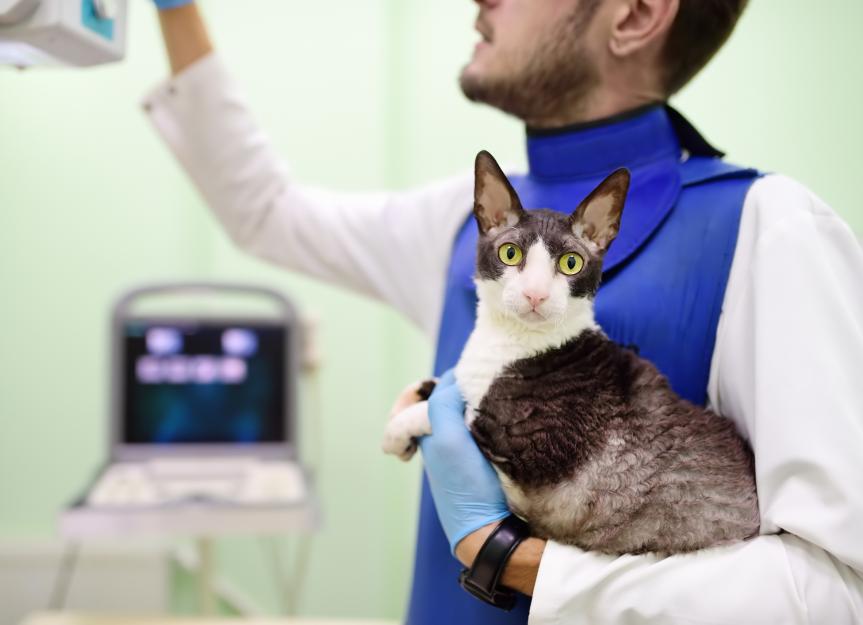
When it comes to our feline companions, their ability to hide pain or illness is almost legendary.
But that trait, while deeply rooted in their instincts, makes it especially hard to spot the early signs of serious diseases like cancer. The truth is, cancer is not uncommon in cats, and it can progress quietly until it’s more advanced. The good news? There are ways to get ahead of it.
Early detection can save lives. And today, more tools are available than ever to help you and your veterinarian stay proactive about your cat’s health. Here’s what every cat parent should know about cancer screenings, and why they matter so much.
Key Takeaways
- Cancer is common in cats, and early detection through routine screening can significantly improve treatment options and outcomes.
- Screenings are especially important for senior cats, certain breeds, and those with chronic inflammatory conditions.
- Subtle changes like weight loss, grooming habits, or litter box behavior can signal early illness—even if your cat seems healthy.
- Proactive vet visits and monitoring your cat at home are critical tools for catching cancer early for your cat.
What Is Cancer Screening for Cats?
Cancer screening is a proactive approach to identifying cancer in cats, or early signs of it before symptoms become severe. While it might sound scary, cancer screening for your cat isn’t something to fear, it’s something to embrace as part of routine wellness care, especially for older or at-risk cats.
Here’s what to expect during a cat cancer screening:
-
Initial exam: Your vet will begin with a thorough physical exam, palpating (feeling) for any abnormal lumps, bumps, signs of discomfort, or other irregularities.
-
Diagnostic testing: While routine bloodwork like a CBC (complete blood count) and biochemistry profile are common, it’s important to know that these don’t directly detect cancer, but they can raise red flags.
-
Advanced screening tools: If your veterinarian suspects something abnormal during the physical exam, they may recommend imaging (X-rays, ultrasound), fine needle aspiration, or advanced diagnostics like biopsy or cytology.
Cancer screenings aren’t just for sick cats. Veterinarians may recommend them:
-
For cats with unexplained weight loss, appetite changes, or behavioral shifts such as lethargy, hiding, poor grooming, or changes in litterbox habits
Does My Cat Need to Be Screened for Cancer?
It’s always worth asking your vet.
Not every cat will need a cancer screening, but having the conversation, especially as your cat ages, can help catch early signs before they become more serious.
Some cats may be at higher risk, including:
-
Certain breeds, like Siamese, which may have a higher predisposition to certain cancers
If you’re unsure about your cat’s breed, investing in a cat DNA test can help to determine possible health issues linked to specific breeds.
And even if your cat seems fine, subtle signs may go unnoticed. These subtle signs you may notice at home can include:
Remember, if anything feels off about your cat’s health, talk to your vet.
Why Early Cancer Detection for Cats Matters
When cancer is found early, treatment options expand and outcomes often improve.
Early detection can lead to:
-
Less invasive treatments such as targeted radiation, less invasive surgery, oral chemotherapy, or immunotherapy.
Unfortunately, signs of cancer in cats are often subtle. Unlike dogs, who may show more dramatic symptoms, cats tend to hide pain or withdraw quietly, changes that can be mistaken for normal aging. That’s why vigilance and proactive care are so important.
Cancer Screening Tests for Cats: Where We Are Today
While cancer screening for cats is not as advanced as it is for dogs, the field is evolving.
Current cat diagnostic tools include:
A biomarker test that can be performed early, before pursuing more expensive diagnostics, could serve as a valuable bridge, increasing participation in preventative care while supporting earlier intervention.
One recent study published in Veterinary and Comparative Oncology explored biomarkers for early cancer detection in cats, yielding promising preliminary results. Cell-free DNA (cfDNA) is one of those biomarkers being studied in cats that is detected in the blood as a result of cell death.
While several companies are developing at-home early detection tests, it’s important to proceed with caution and ensure that any product you consider is supported by peer-reviewed research and endorsed by your veterinarian.
How to Set Your Cat Up for Early Detection Success
Many cat parents still avoid routine veterinary visits unless they are visibly ill, making it difficult to justify costly diagnostics such as bloodwork and imaging in apparently healthy animals. But taking action early and staying on top of appointments can save money and stress down the line.
Here’s how you can better manage your cat’s health:
-
Schedule regular wellness exams, especially for cats over age 7, and highly consider semiannual visits for seniors.
-
Stay observant at home, and notice subtle changes in behavior, appetite, weight, litter box habits, or energy.
-
Ask your vet about screening, especially if your cat is older, a high-risk breed, or has a medical history of concern.
Being proactive about your cat’s health doesn’t mean living in fear, it means giving your cat the very best chance at a long, healthy life. Talk to your veterinarian, stay curious, and keep learning. Because when it comes to cancer, knowledge really is power.



